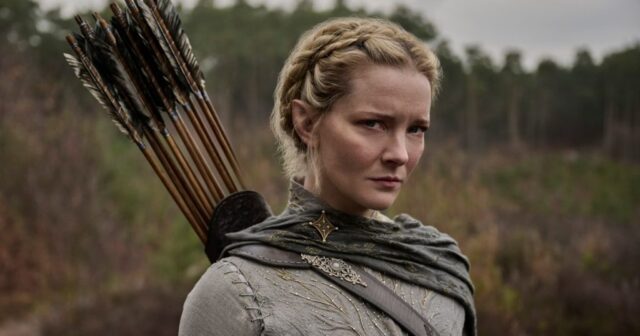In its second season, The Lord of the Rings: The Rings of Power doesn’t just move full speed ahead to the conflict between the Elves and Sauron (Charlie Vickers) that is the centerpiece of the Second Age. It also finds unexpected, sometimes ingenious, ways to incorporate elements from J.R.R. Tolkien’s Lord of the Rings books that weren’t featured in Peter Jackson’s beloved adaptation of the author’s work. The Prime Video series, for example, found room in its second season for the mysterious and eccentric Tom Bombadil (Rory Kinnear) — a powerful creature that Jackson and his collaborators chose to leave out of The Fellowship of the Ring adaptation.
The final episode of Ring of Power Season 2 , titled “Eldest,” also features a sequence in which Galadriel (Morfydd Clark), Elrond (Robert Aramayo), and their entire elven scouting party find themselves surrounded by restless, hungry spirits. It’s a sequence that will likely come as a startling surprise to those unfamiliar with Tolkien’s writings. However, for readers of the books, it will likely be seen as a questionable, canon-breaking piece of source material and an attempt to give them something they’ve been waiting for for 23 or more years.
In “Eldest”, Galadriel and her friends confront the hideous specters known to Tolkien’s readers as “Barrow-wights”. They appear briefly in the 1954 book version of The Fellowship of the Ring , when Frodo Baggins and his friends are trapped in the Barrow-downs by wights. Frodo and his fellow Hobbits are then rescued by Tom Bombadil, who appears again to save the day after Frodo sings his song. This entire sequence, in particular, was omitted from Peter Jackson’s The Fellowship of the Ring film, which completely ignores the Hobbits’ encounter with Tom Bombadil and their journey through the Barrow-downs.
The origins of the Barrow-wights are not entirely clear. However, it is known that they were originally sent to Barrow-downs during the Third Age by the Witch-king of Angmar. He sent the spirits to the region to prevent any Man—or anyone else, for that matter—from rebuilding the fallen kingdom of Cardolan, whose destruction he himself had overseen. It is also said that the Witch-king later revisited Barrow-downs to awaken the Barrow-wights and prepare them for a potential attack on the Ring-bearer that he and his fellow Nazgûl were hunting.
A debut that breaks the canon
The Wizard King, of course, doesn’t exist yet. The Ring of Power means there’s no canonical reason for the Barrow-wights to haunt the Barrow-downs. The kingdom of Cardolan hasn’t even been established in the series. For this reason, the inclusion of the Barrow-wights in “Eldest” is another example of the Ring of Power deviating from the canon established by Tolkien. The show also creates its own way to defeat the Barrow-wights when Elrond tells his fellow Elves to use the same weapons used to bury the spirits’ physical bodies to cut them down.
This is a discovery that, to The Ring of Power’s credit, makes sense in its fantasy world, but has no basis in Tolkien’s canon. After all, the Barrow-wights are tended to in The Fellowship of the Ring by Tom Bombadil, who appears to be far stronger than most other characters in Middle-earth. (That said, Merry does use his Barrow-blade—that is, a dagger taken from the Barrow-downs—to successfully stab the Witch-king in the knee in The Return of the King . (So it’s canonically correct to suggest that the weapons buried in the mound were more powerful than ordinary swords and daggers.)
Some Tolkien fans may be disappointed by Ring of Power’s decision to go against canon and include the Barrow-wights in the new season. To the audience’s credit, the spirits don’t end up doing much in “Eldest” other than giving Ring of Power a reason to include a number of fun, unique, and creepy acts.
However, for fans who have waited years to see what a live-action Barrow-wight would look like, the monster’s inclusion in “Eldest” will likely be seen as long overdue. Either way, like Tom Bombadil’s storyline this season, Ring of Power ‘s Barrow-wight scenes in ‘The New York Times’ actually feel like yet another part of the series’ ongoing effort to deliver its most comprehensive live-action vision of Middle-earth to date.






